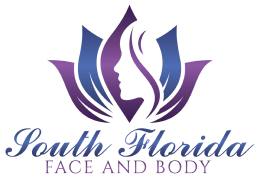Knowing the ingredients in your skincare is as important as knowing the ingredients in your food. It is also a little more complicated than that, because not only being educated about ingredients, your skin condition and age are also to be considered when choosing the right products (and also the time of day for application, and sequence…but that’s another story for another BLOG). This BLOG aims to explain which active ingredients are typically introduced at every age group for maximum anti-aging and prevention benefits. The actives included in the list below can be found in over-the-counter products. Medical grade skincare is on a different level, with different actives, and will be covered later.
Let’s start out by differentiating ingredients versus ACTIVE ingredients. On the back of a product there is a label of all ingredients. You will notice at the top there will be a separate section with “ACTIVE INGREDIENTS”, and closer to the bottom will be the list of other ingredients. Active ingredients are the most important ones to consider because they indicate what the product contains the most of.
Six Months Old: Sunscreen
Yes, SPF is considered an active ingredient and it’s the one non-negotiable skin care ingredient you should be using in this climate. According to The American Academy of Pediatrics, it can be incorporated in infancy as early as six months of age, and you should aim for an SPF of 30 to 50. Ask your pediatrician for appropriate brand recommendations.
Teens: Salicylic Acid
While there’s no correct time to start or stop using salicylic acid, it’s an excellent ingredient for oily or acne-prone skin types, which are more common in teenage years.
Salicylic acid is a beta-hydroxyacid (BHA) that exfoliates the top layers of the skin by loosening the bonds between skin cells. It works to exfoliate and brighten skin complexion, as well as de-clog pores to prevent blackheads, whiteheads, and acne breakouts. Teenagers may start using salicylic acid to help with teenage acne while adults may use it to help improve dull complexion.
Teens: Benzoyl Peroxide
Like salicylic acid, benzoyl peroxide is primarily used to treat acne which makes it a good ingredient to incorporate in your teenage years. You can continue using it as long as you’re dealing with acne, which many people experience far into adulthood.
Benzoyl peroxide has both anti-inflammatory and antibacterial properties and can kill acne-causing bacteria in the skin without inducing bacterial resistance. It also reduces the redness and inflammation caused by acne. This ingredient is rather potent and can be irritating with side effects including dryness, redness, peeling, and sensitivity.
Early 20s: Vitamin C
Your early 20s are a great time to begin using vitamin C, and you should continue using it throughout adulthood. This powerful antioxidant protects your skin from free radicals that can damage skin and expedite signs of aging, including wrinkles, skin laxity, and sunspots. It can also help reverse some of these signs.
There are countless scientific studies that back up vitamin C’s topical benefits, and studies have also found that vitamin C and sunscreen work in tandem with each other to strengthen the other’s protecting properties. For that reason – apply vitamin C in the morning.
20s: Alpha Hydroxy Acids
(AHAs) are exfoliating ingredients that help resurface the skin and brighten your complexion, making them an ideal ingredient to incorporate as early as your 20s. You can (and should) continue using them through adulthood either as a daily treatment (when in mild form), every-other-day or weekly in over-the-counter applications (depending on strength), or as a monthly or bi-monthly peel performed by a professional.
30s and over: Hydroquinone
Technically, this active can be used by any adult of any age, but it’s often reserved for those who are dealing with severe hyperpigmentation issues. These tend to develop in our 30s and become more severe as we age. The ingredient may be used to treat lingering acne-related redness in older teens and those in their 20s. It should never be used by pregnant woman.
Hydroquinone is a type of phenol with skin lightening properties that’s used cosmetically to help lighten areas of darkened skin, as in melasma, post-inflammatory hyperpigmentation (PIH), acne blemishing, and sunspots.
30s and over: Retinol (Vitamin A)
Retinol is a potent form of vitamin A that comes in different percentages and in different mediums, including serums, oils, and moisturizers. As soon as you start to see early signs of aging then you should begin using this ingredient.
That means you can technically begin using retinol in your mid to late 20s, or, more commonly, your early to mid 30s. If you’re beyond that age and worried it’s too late to start using retinol, it’s not too late at all. Retinol essentially exfoliates the skin and generates cell turnover, and it’s been scientifically proven (repeatedly) to not only slow down signs of aging, but to reverse them. Except for SPF, it’s the most highly recommended ingredient by dermatologists.
Bottom Line
There aren’t many hard and fast rules when it comes to incorporating actives. When in doubt, let your skin be a guide in what you ought to be using. For instance, if you’re dealing with super oily skin and acne, try salicylic acid. If you start seeing signs of aging, it’s time to pick up retinol. If your skin could use some brightening, reach for an AHA.


